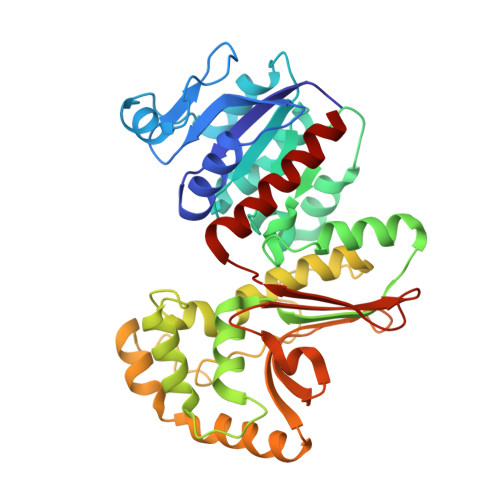Enzyme assisted suicide: Molecular basis for the antifungal activity of 5-hydroxy-4-oxonorvaline by potent inhibition of homoserine dehydrogenase
Jacques, S.L., Mirza, I.A., Ejim, L., Koteva, K., Hughes, D.W., Green, K., Kinach, R., Honek, J.F., Lai, H.K., Berghuis, A.M., Wright, G.D.(2003) Chem Biol 10: 989-995
- PubMed: 14583265
- DOI: https://doi.org/10.1016/j.chembiol.2003.09.015
- Primary Citation of Related Structures:
1Q7G - PubMed Abstract:
The structure of the antifungal drug 5-hydroxy-4-oxonorvaline (HON) in complex with its target homoserine dehydrogenase (HSD) has been determined by X-ray diffraction to 2.6 A resolution. HON shows potent in vitro and in vivo activity against various fungal pathogens despite its weak (2 mM) affinity for HSD in the steady state. The structure together with structure-activity relationship studies, mass spectrometry experiments, and spectroscopic data reveals that the molecular mechanism of antifungal action conferred by HON involves enzyme-dependent formation of a covalent adduct between C4 of the nicotinamide ring of NAD(+) and C5 of HON. Furthermore, novel interactions are involved in stabilizing the (HON*NAD)-adduct, which are not observed in the enzyme's ternary complex structure. These findings clarify the apparent paradox of the potent antifungal actions of HON given its weak steady-state inhibition characteristics.
Organizational Affiliation:
Antimicrobial Research Centre and Department of Biochemistry, McMaster University, Hamilton L8N 3Z5, Canada.




















